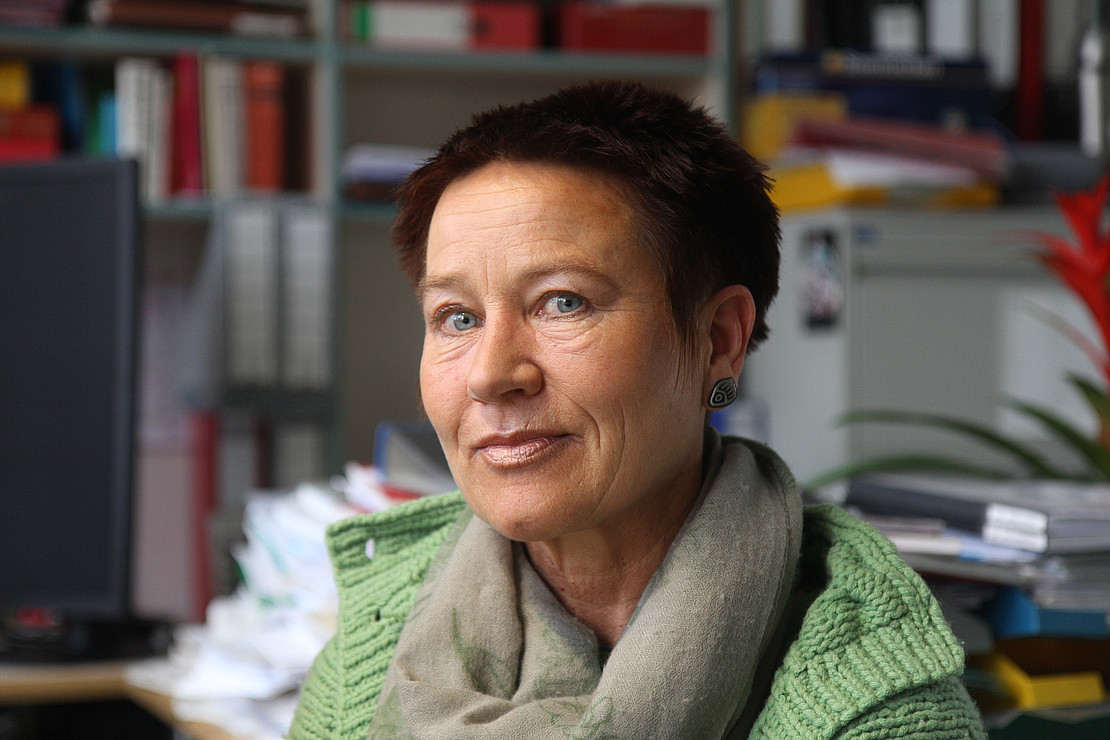This page contains automatically translated content.
Innere Uhren: Kasseler Forscherin wirbt DFG-Graduiertenkolleg ein

Circadiane Uhren mit einer Periodenlänge von etwa 24 h steuern in unserem Körper verschiedene Rhythmen in Physiologie und Verhalten, eingebettet in den 24h-Tag unserer Umwelt. Indem wir Licht mit unseren Augen wahrnehmen, synchronisieren wir unser circadianes Schrittmacherzentrum im Gehirn mit dem Tag-Nacht-Rhythmus. Die vielen im ganzen Körper verteilten inneren Uhren müssen sich dann untereinander synchronisieren, um eine einheitliche Körperzeit zu generieren und diese dann stabil an Rhythmen in der Umwelt anzukoppeln. Müdigkeit, Hunger, Leistungsfähigkeit, Schmerzempfindlichkeit, Zellreparaturen – alles läuft synchronisiert zu definierten Tageszeiten im 24-Stunden-Zyklus ab. Daneben gibt es im Organismus weitere Uhren beispielsweise Hormondrüsen, die im monatlichen oder jährlichen Rhythmus ticken, oder auch in Zyklen, die kürzer als ein Tag sind.
Im neuen DFG-Graduiertenkolleg untersuchen die Forscherinnen und Forscher künftig insbesondere die Synchronisation von verschieden schnellen Uhren (multiscale clocks). Dabei spielt die Zellmembran als Uhr mit verschiedenen „Zeigern“, von Millisekunden bis zu Stunden und Tagen, bei der Synchronisation verschiedener zeitlicher Kreisläufe eine sehr wichtige Rolle. Über die Membran nämlich können chemische und elektrische Vorgänge gemessen und in Information umgesetzt werden, die das Gehirn verarbeiten kann. Bei der Koordination verschiedener biologischer Rhythmen im Organismus spielt die Zellmembran und ihre Kommunikation mit genetischen Uhren im Zellkern eine ganz wesentliche, aber noch nicht genug erforschte Rolle.
Wie die DFG heute (8. November) bekanntgab, fördert sie das Graduiertenkolleg „Biological Clocks on Multiple Time Scales“ über viereinhalb Jahre. Das Kolleg umfasst 12 Stellen für Doktorandinnen und Doktoranden und eine Post-Doc-Stelle. Beteiligt sind neben Stengls Fachgebiet Tierphysiologie/Neuroethologie eine ganze Reihe weiterer Fachgebiete der Universität Kassel aus unterschiedlichen Naturwissenschaften, den Ingenieurwissenschaften und der Mathematik.
Die Ergebnisse des Kollegs sollen verstehen helfen, wie sich nicht nur einzelne Lebewesen mit der Umwelt, sondern letztlich ganze ökologische Systeme untereinander und mit ihrer Umwelt synchronisieren. Die Erkenntnisse werden über die Biologie hinausweisen: „Eine innere Uhr oder anders ausgedrückt ein Oszillator ist nicht nur ein Archetyp für rhythmisches Verhalten. In der Physik ist ein Oszillator auch ein Eckpfeiler der Theorien, die zur Beschreibung der Zeit entwickelt wurden. Außerdem schaffen Oszillatoren mit ihren charakteristischen Eigenschaften die Grundlagen für Selbstorganisation, Autonomie, Gleichgewicht und Nachhaltigkeit. Folglich ist es nicht nur für Biologen von großer Bedeutung, die grundlegenden Eigenschaften von interagierenden schnellen und langsamen Uhren/Oszillatoren zu verstehen, welche die Zeit erzeugen“, so Stengl. Auch für Ingenieurinnen und Ingenieure und andere wie beispielsweise Umweltschützer wäre dieses Wissen sehr wichtig.
Seit mehr als 20 Jahren leistet Monika Stengl als international anerkannte Wissenschaftlerin zusammen mit ihrer Arbeitsgruppe wesentliche Beiträge zur Chronobiologie und auch zur Olfaktorik. Der für Forschung zuständige Vizepräsident der Universität Kassel, Prof. Dr. Michael Wachendorf, gratulierte ihr und ihren Kolleginnen und Kollegen zum Erfolg. „In diesem Kolleg gibt sie ihr Wissen an junge Forscherinnen und Forscher weiter“, so Wachendorf. Mit der Expertise von weiteren hervorragenden Kolleginnen und Kollegen aus den Naturwissenschaften und der Mathematik könne das Projekt zudem hochinteressante Bezüge zu Nachbardisziplinen herstellen.
Kontakt:
Prof. Dr. Monika Stengl
Universität Kassel
Fachgebiet Tierphysiologie
E-Mail: stengl[at]uni-kassel[dot]de